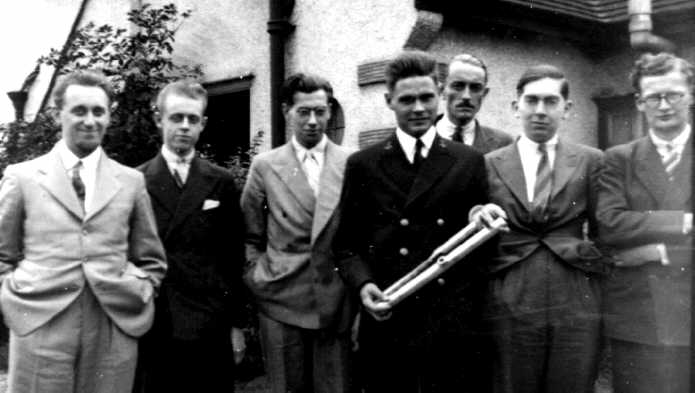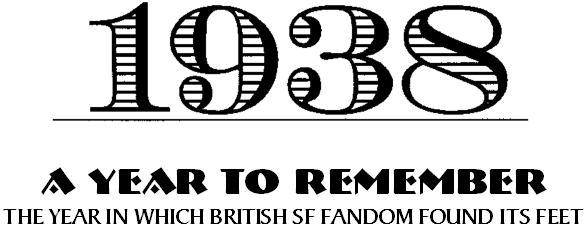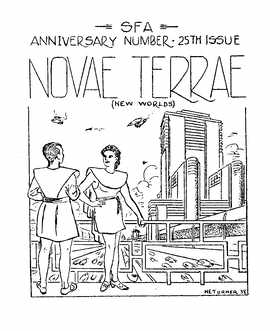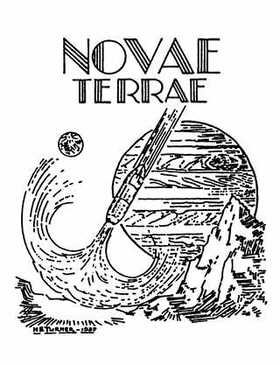
| FOOTNOTES TO FANDOM | FOOTNOTES Page | Obituary Page | |
| |||
|
It was a truly crowded year for me. I visited Leeds SFA HQ during March, together with fellow Manchester fan Stan Davies, I visited Liverpool, I attending the second national convention of the British Science Fiction Association in London, I was drawing covers for Novae Terrae, the monthly journal of the Science Fiction Association... In Leeds, I made the acquaintance of Frank Dobby among the resident fans, finding a common interest in Surrealism; then a hot topic after the Surrealist exhibition of 1938 when Dali nearly suffocated in his diving suit...
1938 was the year when control of the Science Fiction Association passed from Leeds to London, on the occasion of the first national fan convention held in London on April 10th at the AOD Hall. I travelled down with Fred Tozer for the great occasion, and took a bundle of artwork. I met Bob Truax back in July 1938 when he was guest speaker at a London meeting of the British Interplanetary Society. At that time I was secretary of the Manchester Interplanetary Society and he was Midshipman Robert C. Truax of the US Navy, conveniently over here on a training cruise, and raring to tell us about recent research work with rocket motors he'd carried out at the experimental station on Chesapeake Bay. He turned up in uniform, smart, confident, in his early twenties, bringing data and equipment, and bowling us over with his know-how and infectious enthusiasm. |

Group at the home of R.A. Smith, in Chingford , then HQ of the British Interplanetary Society, on Sunday 17 July 1938. left to right: J.H. Edwards, Eric Burgess, Harry Turner, Guest of Honour Midshipman Robert C. Truax, USN, R.A. Smith, Maurice Hanson & Arthur C. Clarke At that time Britain lagged behind when it came to serious support for rocketry and the prospect of space travel. While extensive work had been carried out by groups in Europe and the States during the twenties and thirties, practical experimental work here was hindered by a law dating back to 1875, which effectively prohibited any rocket tests by members of the general public. There had been no Journal published that year, partly because the design plans for the British Interplanetary Society Cellular-Step Spaceship were still being finalised, and partly because of the need to build up an Experimental Research Fund. I was not entirely surprised, some 35 years later, to hear that Bob Truax was the moving spirit and technical backing for Evel Knievel's projected death-defying leap by rocket across the Snake River canyon. ■
|
 |



